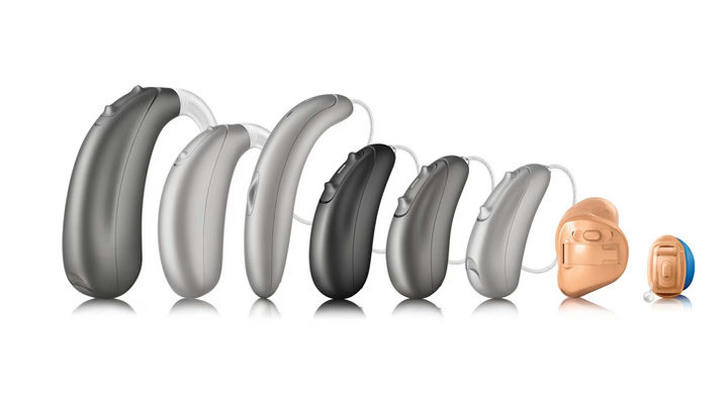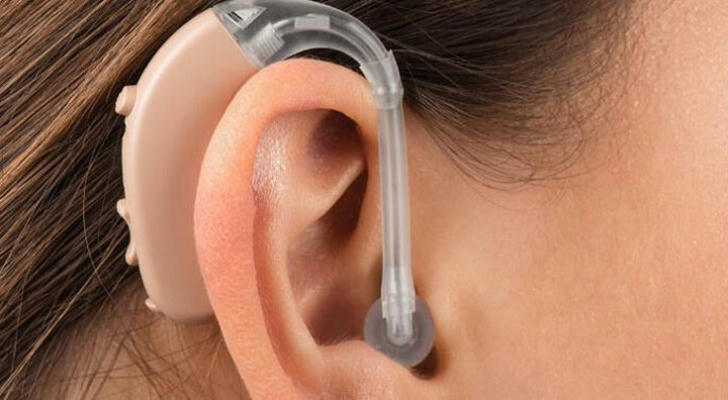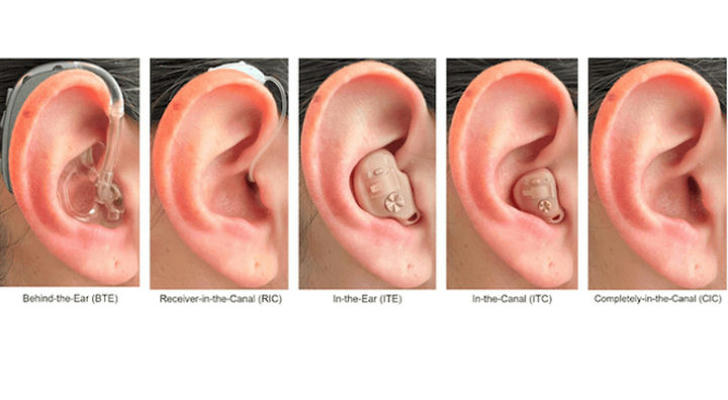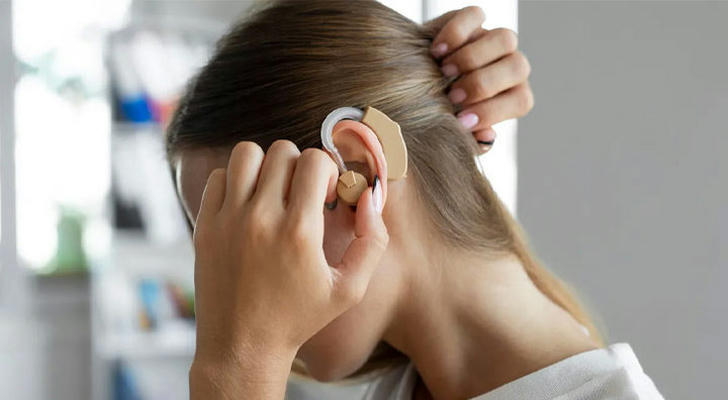Choosing The Right Hearing Aid For You Buying Guide And Common Misconceptions

In a world where clear communication is crucial, hearing aids have become essential tools for those with hearing loss. With a growing range of options available, selecting the right hearing aid can be overwhelming. This guide aims to simplify the process, offering valuable insights into choosing the best hearing aid for your needs and clarifying common misconceptions.

I.Comprehensive Guide to Choosing the Right Hearing Aid
1.Get a hearing assessment
Professional hearing test: First, get a comprehensive hearing assessment. The audiologist will test your hearing loss and determine the most suitable type of hearing aid.
Determine the type of hearing loss: Understand whether your hearing loss is sensorineural or conductive to help choose the right hearing aid.
2.Understand the types of hearing aids
In-the-ear hearing aids (ITE): Suitable for mild to moderate hearing loss, highly concealed and comfortable to wear.
Behind-the-ear hearing aids (BTE): Suitable for mild to severe hearing loss, with diverse functions and wide adaptability.
Completely in-the-canal hearing aids (CIC): Almost completely concealed, suitable for mild to moderate hearing loss.
Receiver-in-the-canal hearing aids (RIC): Provide clear sound quality, compact appearance, suitable for moderate to severe hearing loss.
Cochlear implants: Used in cases of severe to profound hearing loss, requiring surgical implantation.
3.Consider your personal needs and lifestyle
Living environment:Activity level: Active people may need a more durable hearing aid, consider a design that is waterproof, dustproof, and impact-resistant.

II.Advantages and disadvantages of various types of hearing aids
1.In-the-ear hearing aids (ITE)
(1)Advantages:
• Discreetness: Because it is designed to be completely placed in the ear canal, it is not easy to be noticed and has a more concealed appearance.
• Comfort: Customized design, fits the ear canal, and is comfortable to wear.
• Easy to operate: Due to its large size, the operating buttons are usually large, suitable for people with operating needs.
(2)Disadvantages:
• Limited scope of application: Suitable for mild to moderate hearing loss, not suitable for people with severe hearing loss.
• May be affected by moisture in the ear canal: Because it is located in the ear canal, it is easily affected by moisture and earwax in the ear canal.
• Noise problem: Small noise or wind in the ear canal may be amplified, affecting the hearing experience.
2. Behind-the-ear hearing aids (BTE)
(1)Advantages:
• Wide scope of application: Can handle hearing loss from mild to severe, strong applicability.
• Long battery life: Usually use larger batteries, longer battery life.Multiple functions: Can integrate more technologies and functions, such as wireless connection and noise management.
(2)Disadvantages:
• Conspicuous appearance: worn behind the ear, it may be more obvious and not as concealed as in-ear hearing aids.
• Comfort issues: Although modern designs are more comfortable, they may still be uncomfortable for some users.
3. Completely in-the-canal hearing aids (CIC)
(1)Advantages:
• Concealment: Almost completely hidden in the ear canal, the appearance is very concealed.
• Comfort: Due to the compact design, it is almost imperceptible when worn.
(2)Disadvantages:
• Limited applicability: Suitable for mild to moderate hearing loss, not suitable for severe hearing loss.
• Small battery: Due to the small size, the battery capacity is small and needs to be replaced more frequently.
4. Cochlear implants
(1)Advantages:
• For severe hearing loss: For severe hearing loss that cannot be met by in-the-canal hearing aids, cochlear implants provide an effective solution.
• Strong sound processing ability: It can handle complex sound environments and provide users with a more natural hearing experience.
(2)Disadvantages:
• Surgery required: It requires surgical implantation, which is complicated and may involve certain risks.
• High cost: It is expensive and requires long-term maintenance and adjustment.
III.Common Misunderstandings About Hearing Aids
1.Hearing Aids Will Restore Hearing to Normal
A common misconception is that hearing aids will completely restore hearing. While they significantly improve hearing ability, they do not cure hearing loss. Hearing aids amplify sounds, making them more audible, but the quality of hearing may still be affected.
2.Hearing Aids Are Only for the Elderly
Hearing loss can affect people of all ages. Hearing aids are beneficial for anyone with hearing impairment, regardless of age. Early intervention with hearing aids can prevent further hearing deterioration and improve overall quality of life.
3.Hearing Aids Are Too Expensive
While hearing aids can be a significant investment, there are various options available at different price points. Many insurance plans and government programs offer partial coverage or financial assistance for hearing aids. Additionally, consider the long-term benefits and improved quality of life they provide.
4.Hearing Aids Are Hard to Use
Modern hearing aids are designed with user-friendliness in mind. Advances in technology have made them more intuitive, with features that can be controlled via smartphone apps. Audiologists also provide training on how to use and care for your hearing aid effectively.
5.All Hearing Aids Are the Same
Hearing aids vary greatly in terms of features, styles, and technology. It's important to choose a hearing aid tailored to your specific hearing loss, lifestyle, and preferences. Consulting with an audiologist can help you find the best fit for your needs.
IV.Case
Ms. Li is a 55-year-old middle school teacher who has been suffering from hearing loss in recent years. She often cannot hear students clearly in class, and social situations have become increasingly difficult. After many delays and attempts, she decided to take the problem seriously and look for a hearing aid that is suitable for her.
Ms. Li first made an appointment with an audiologist for a comprehensive hearing assessment. The assessment results showed that she had moderate sensorineural hearing loss, which affects the hearing of high-frequency sounds.
Based on the audiologist's advice, Ms. Li began to consider different types of hearing aids. She was interested in in-the-ear hearing aids (ITE) and receiver-in-the-canal hearing aids (RIC). In-the-ear hearing aids are more concealed, but she is worried about whether its sound quality and amplification are sufficient. Receiver-in-the-canal hearing aids provide clear sound quality and strong amplification, but are slightly more conspicuous in appearance.Ms. Li chose a receiver-in-the-canal hearing aid with noise suppression and automatic adjustment. The audiologist conducted detailed commissioning for her, including volume settings and personalized sound adjustments, to ensure that her hearing needs in different environments can be met.
After several months of use, Ms. Li found that her hearing had improved significantly. Communication in class became smoother, and she was able to participate in social activities better. She was particularly satisfied with the noise management and automatic adjustment functions of the hearing aids, and felt that they greatly improved her quality of life. Although the hearing aids were not as invisible as she had initially hoped, she felt that the improvement in hearing and quality of life brought by the hearing aids was completely worth it.

V.conclusion
Choosing the right hearing aid for you is more than just a decision. It’s about improving your quality of life. You can find the best hearing aid by understanding your hearing needs, learning about different types of hearing aids, considering key features, and ensuring a comfortable fit. While there are many options and technologies on the market, it’s important not to be misled by common misconceptions, such as believing that hearing aids can completely restore hearing, are only for the elderly, or are too expensive. Modern hearing aid technology continues to advance, providing effective solutions for a variety of hearing losses, and many high-quality hearing aids are available at different price points.
